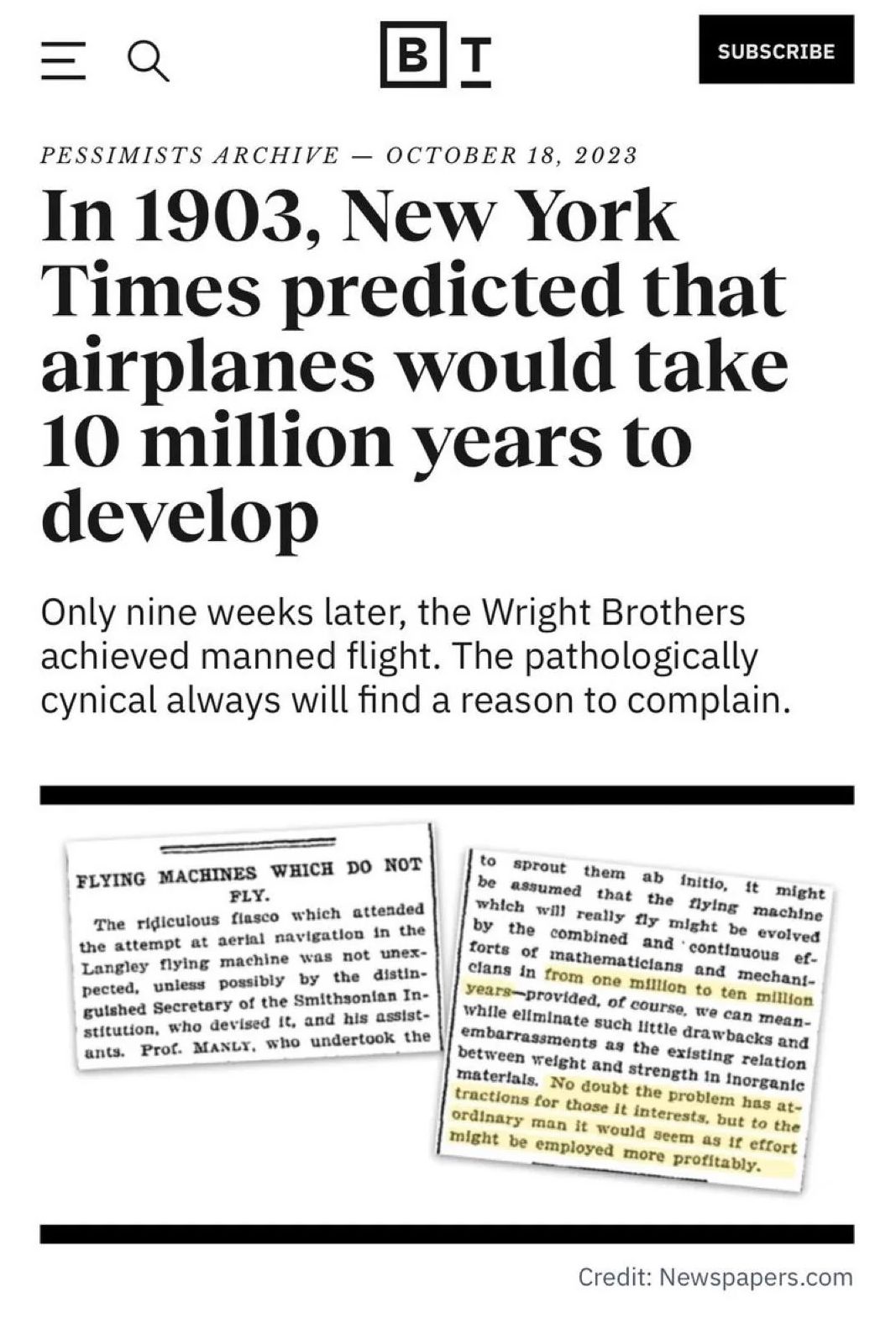YOU REALLY NEED TO UNDERSTAND WHAT WE’RE UP AGAINST:
A meme floating around Facebook actually prompted this story.
In an October 1903 article, the New York Times predicted it would take “one to ten million years” for man to develop a working “flying machine.”
We all know how that turned out. Sixty-nine days later, on Dec. 17, 1903, Orville and Wilbur Wright made their historic first successful flight in the heavier-than-air Wright Flyer in Kill Devil Hills, North Carolina.
The New York Times was wrong then, and they continue to be wrong about many important things. One of the most dangerous in recent years was the Russia collusion story, for which they were awarded a Nobel Prize. For months before the 2016 election, the Times shouted Russia, Russia, Russia! from the rooftops, even after it became clear that the story was a psyops pushed by Hillary Clinton’s campaign. That was the real “election interference,” not the nonsense the Times was pushing.
There were also the myriad conspiracy theories: Hunter’s laptop was fake, Trump told people to inject bleach into their lungs and suggested they take horse pills, and conservatives (especially the scary Christian ones) are the biggest threat to democracy anyone has ever seen.
More recently, the Times, desperate to protect Joe Biden, claimed that videos showing him to be frail and confused are “cheap fakes.”
Having learned nothing from their mistake regarding terrestrial flight, in 1920, the Gray Lady mocked the idea of space flight: The Correction Heard ‘Round The World: When The New York Times Apologized to Robert Goddard.
And on January 13, 1920, the New York Times published an editorial insisting that a rocket couldn’t possibly work in space:
“That professor Goddard, with his ‘chair’ in Clark College and the countenancing of the Smithsonian Institution [from which Goddard held a grant to research rocket flight], does not know the relation of action to reaction, and of the need to have something better than a vacuum against which to react — to say that would be absurd. Of course he only seems to lack the knowledge ladled out daily in high schools.”
Goddard pushed back against the wave of criticism in a Scientific American article later that year, but Newton’s Third Law doesn’t apply to public relations, and his response was mostly drowned out by the attacks. He retreated from the public eye, and from most interaction with other scientists, but continued his research.
Eventually, of course, Goddard would be vindicated by the 1944 launch of a German V-2 guided ballistic missile. But it took until July 17, 1969, the day after the launch of a crewed mission to the Moon, for the New York Times to take back its harsh words. The 1969 correction is almost comically dry and conspicuously doesn’t mention the Apollo mission.
“Further investigation and experimentation have confirmed the findings of Isaac Newton in the 17th century, and it is now definitely established that a rocket can function in a vacuum as well as in an atmosphere,” the Times editors wrote. They added, “The Times regrets the error.”
On the flip side, don’t get the Timesmen started gushing over those nice young men from Austria and Georgia:
● The Times’ necrophiliac 1953 obit for one of the 20th century’s most brutal mass murderers was headlined: Stalin Rose From Czarist Oppression to Transform Russia Into Mighty Socialist State.

